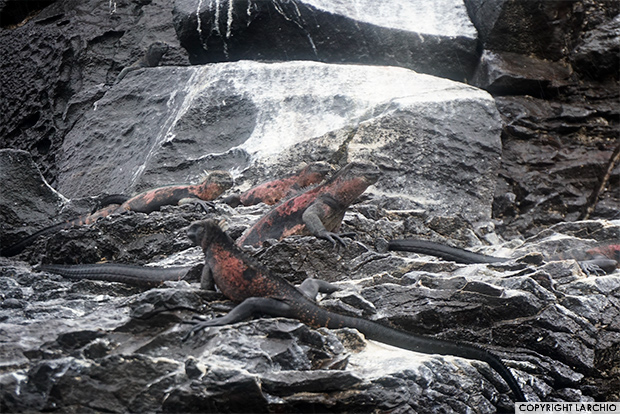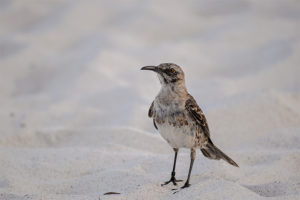Cruise in Galapagos Islands
Looking for the best rated Galapagos tour operator? Travel with GalapagosInformation.com. Highly recommended in Booking.com. Enjoy the ultimate traveling experience of your life. The best rated company, many choices, high level accommodations, skilled guides. All Inclusive travels, every week of the year. Book today. Cruise in Galapagos Islands.
A holiday to the Galapagos Islands is most likely the adventure of your lifetime. Located 1,000 km from the Ecuadorian mainland, the islands chain consists of 13 large islands, five of which are inhabited. Learn more about the widely known Islands taking a trip with us!
The main reason for tourists to go to the Galapagos Islands is definitely the great numbers of wildlife, without restraint romping with that usually are known to plenty of people only in the Discovery Channel.
The Galapagos Islands are blessed with pleasant weather conditions all year round, which means that there is not any “best” time to visit the precious islands. However, you might actually consider elements including peak season vs. low season and the local weather. Whether the vacation is for you, your team, or your family, consider when to check out the Galapagos Islands.
The Galapagos Islands will undoubtedly impact you deeply. Travel with us and have the adventure of your life between sea lions, albatrosses, reddish colored sally light-foot crabs, and sneaky frigate birds. You could make your dream become a reality and book with us now!
Galapagos Islands Monthly Weather Averages
Thanks to the confluence of freezing water currents from the west, the Galapagos island chain has an infrequent dry and moderate climate for the tropics and it is usually considered sub-tropical. As a result Galapagos vacation a year-round family vacation choice. Galapagos weather conditions are considered tropical, cooled off by the Humboldt Current, and is known by two most important seasons:
The warm, wet season
Late December to June is considered the hot and wet season, with March and April usually remaining the hottest and wettest months. Around December, the trade winds go down and the weather equator (located north of the topographical equator) changes south towards the Galapagos, triggering the westward-flowing current to decrease, lowering the upwelling and allowing warmer water coming from the Panama Current to shower the archipelago. Galapagos climate is characterized by rain clouds which develop in the event the inversion breaks down, in addition to the air heats up and rises, contributing to regular mid-day showers. Even during this period; however, the low elevations get only limited rain.
The colder, dry season
This period, also called the “garua season” runs from late June to December, when it is dry and cool with increased cloudier atmosphere and occasional drizzle or mist during the day. August is the coolest month. In this dry season, Galapagos weather conditions are nice, water temperatures are lower and there are typically clouds on the larger elevations. Visibility is usually decreased in the water due to plankton bloom, but this combination of conditions produces a lot more action in the water and also food is abundant. Because Galapagos weather conditions are not too hot during this time of year, it is also the reproduction interval for many sea birds and shore birds, marine iguanas, sea lions and fur seals.
The Galapagos Islands are probably the most well-known wildlife-watching destination on the planet.
But, on top of that, it’s packed with wildlife at every turn. Within minutes -occasionally seconds- of landing onto this dot in the center of the Pacific Ocean, you can be face-to-face using more strangely adventuresome and curious animals than anywhere else on Earth.
Roughly 620 miles from the coast of Ecuador, and slap-bang around the equator, Darwin’s “Enchanted Isles” consist of a cluster of 13 “appropriate” volcanic islands (bigger than four square miles) plus six smaller islands along with more than 100 islets. Each one has its own unique atmosphere, identifying landscape and inimitable wildlife.
You can view everything from penguins living in the tropics and boobies with glowing blue feet to tool-using woodpecker finches and man frigate birds turning their wrinkled throat sacs in to exceptional, fully inflated red balloons. 1 day you could be watching time-worn giant tortoises from the highlands, and the next you could be snorkeling with sea lions from crystal-clear water. You might be sunbathing on black lava stones next to prehistoric-looking marine iguanas or sitting with waved albatrosses as they perform their bill-circling, swaggering courtship displays (they seem rather like Samurai warriors performing Lord of the Dance).

All this said, 170,000 vacationers visited the Galapagos last year therefore, not surprisingly, it is beginning to feel a little crowded. It is a high-profile location and lots of individuals wish to see it. The consequence of such an attack is that wildlife tourism is more tightly controlled in the archipelago than anywhere else on the planet. You are only allowed to see tiny pockets of this federal park, you can disembark (from small ships) only at designated landing areas, you need to walk just on clearly marked paths in strictly disciplined small groups, also you ought to come with local accredited guides. Regulating tourism with such military efficiency might feel extreme, but it’s essential under the circumstances. Ultimately, however, there needs to be a limitation and at the not-too-distant future, guest numbers might have to be capped.
How to Get to the Galapagos Islands
The Jose Joaquin de Olmedo International Airport in Guayaquil (GYE) receives flights from U.S. cities of Miami and New York, European cities of Amsterdam and Madrid, and important cities of Central and South America. Mariscal Sucre International Airport of Quito (UIO) receives flights in the U.S. via Atlanta, Dallas, Houston and New York; from Europe via Madrid and Amsterdam; and out of many major cities in Central and Southern America. We advise you to arrive at Ecuador at least two days before your Galapagos Cruise starts and grab your international flight home at least 2 days after your stay in the Galapagos. It’s possible to take profit of these two days by visiting Quito, Guayaquil, or even their surroundings. As soon as you have your flight to mainland Ecuador, getting to the Galapagos Islands is easy. Located nearly 1,000 kilometers (600 miles) from Ecuador’s coast, the only way to travel is by airplane. Whether from Quito or Guayaquil, there are several flights every day that take passengers to the archipelago. You can land on Baltra Island or at Puerto Baquerizo Moreno on San Cristobal Island. TAME, AVIANCA and LAN will be the airlines which operate these paths. If you are flying from Quito, you’ll most likely have a short stop in Guayaquil in your way into the islands. Reserve your Galapagos tour before you buy flight tickets to ensure correct dates. Check with your Galapagos cruise or tour company for advice on booking your flight to the Galapagos including optimum arrival days to the Islands according to cruise/program plans.
Galapagos Islands Birds
Bird life in the Galapagos is much more copious and varied only due to the fact that it had been considerably easier for birds to reach the islands compared to reptiles or mammals. To get a reptile or mammal to achieve Galapagos, it needed to survive for weeks or even months at sea, clinging to a floating tree or mass of vegetation. Once it landed, it had to beat the odds and somehow find food and an ecological niche where it might survive. Birds, however, could fly to and from Galapagos with ease. Even smaller species such as finches may be carried out to Galapagos by strong storms. Today, it’s generally these smaller Galapagos species which have accommodated to become endemic. Like most creatures, birds’ seasonal lives, they copulate, migrate and nest at certain time of the year. Here is your guide to make sure you can see your favorite Galapagos animal species on your next trip!
GALAPAGOS CRUISES 2024
NEMO 3
| DEPARTURES | ITINERARY | AVAILABLE CABINS | SPACES | |
|---|---|---|---|---|
| There aren't available dates for the selected dates |
















